 |
 |
 |
| |
Inhibiting memory CD4+ T-cell self-renewal to reduce HIV persistence
|
| |
| |
Download the PDF here
Reported by Jules Levin
9th IAS Conference on HIV Science; July 23-26, 2017; Paris, France
slides pdf attached
M. Mavigner1, M. Zanoni2, J. Habib1, C. Mattingly2, J. Demarest3, H. Kouji4, B. Lawson2, T. Vanderford2, G. Tharp2, S. Bosinger2, G. Silvestri2, A. Chahroudi1
Institutions
1Emory University School of Medicine, Pediatrics, Atlanta, United States, 2Emory University, Yerkes National Primate Research Center, Atlanta, United States, 3ViiV Healthcare, Durham, United States, 4Prism Biolab, Kanagawa, Japan
Background: Long-lived memory CD4+ T-cells with high self-renewal capacity such as central memory (TCM) T-cells and T memory stem cells (TSCM) are major contributors to the viral reservoir in HIV-infected individuals on antiretroviral therapy (ART). The Wnt/beta-catenin signaling pathway primarily regulates the balance between self-renewal and differentiation of TSCM/TCM and pharmacological manipulation of this pathway offers an opportunity to reduce persistence of latently-infected cells.
Methods: To block self-renewal and promote TSCM/TCM differentiation, we used an inhibitor targeting the Wnt/beta-catenin pathway initially developed to target cancer stem cells (called PRI-724). We evaluated the safety of PRI-724 with a dose escalation study in healthy rhesus macaques (RM). We then conducted an efficacy study in twelve SIVmac251-infected RM treated with ART. After suppression of viremia, 8/12 RM received PRI-724 at 10 or 20 mg/kg/day while 4/12 RM were maintained on ART only. The gene profile of CD4+ memory T-cell subsets was assessed longitudinally by RNAseq analyses. RM were sacrificed on ART following twelve weeks of PRI-724 treatment for assessment of SIV reservoirs.
Results: PRI-724 was well tolerated in both healthy and ART-treated SIV-infected RM, with blood counts, liver function, and renal function within normal limits. No alteration of tri-lineage hematopoiesis was observed in bone marrow. The transcriptomic profiling of genes associated with T-cell differentiation showed an increased expression of the EOMES transcription factor in the CD4+ TSCM of PRI-treated animals as compared to controls. Moreover, Gene Set Enrichment Analyses showed that gene sets distinguishing effector versus memory were significantly enriched in the CD4+ TSCM as compared to the naïve T-cells. Interestingly, this CD4+ TSCM enrichment in effector-like genes was significantly higher in the PRI-treated than in the control RM. These results suggest an effect of PRI-724 on CD4+ TSCM differentiation. PCR analyses in the sorted subsets of memory CD4+ T-cells showed no significant difference in cell-associated SIV DNA levels between PRI-724 treated and untreated RM.
Conclusions: This work provides novel support for the strategy of promoting CD4+ TSCM differentiation by pharmacological modulation of the Wnt/beta-catenin pathway. However, combination strategies targeting stem cell pathways and/or additional anti-reservoir strategies are likely necessary to reduce SIV/HIV persistence.
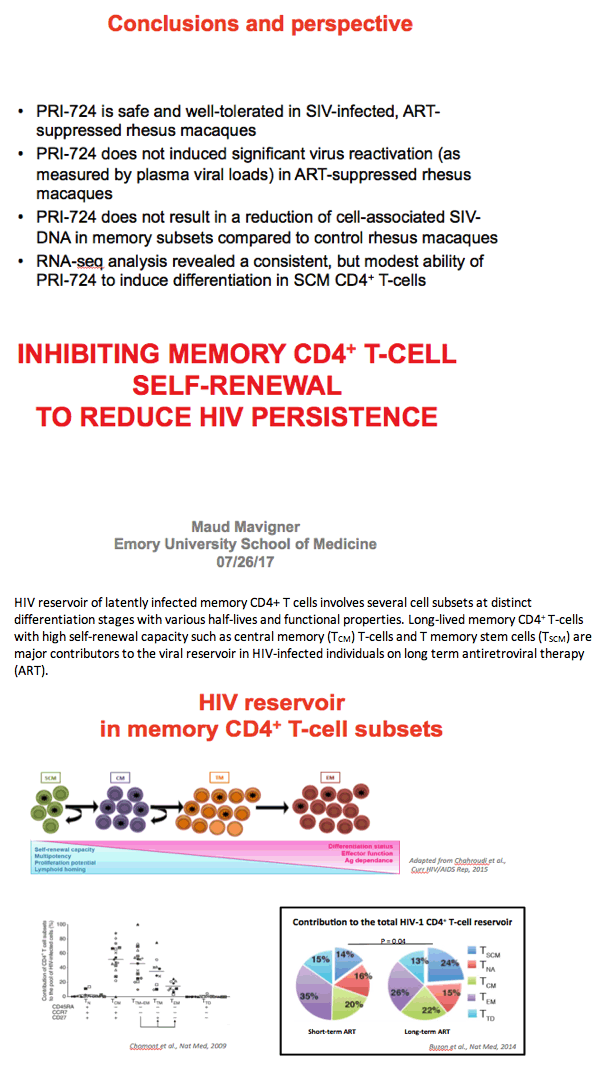
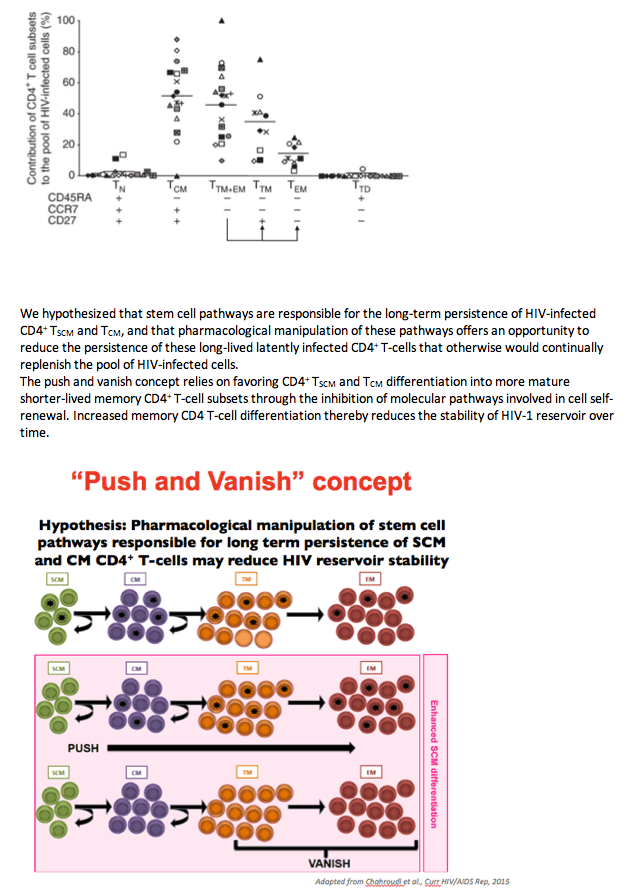
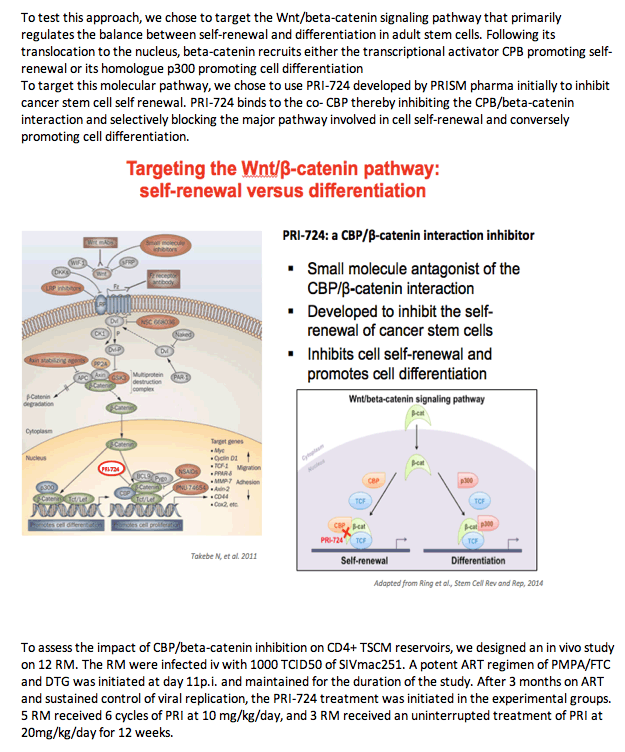
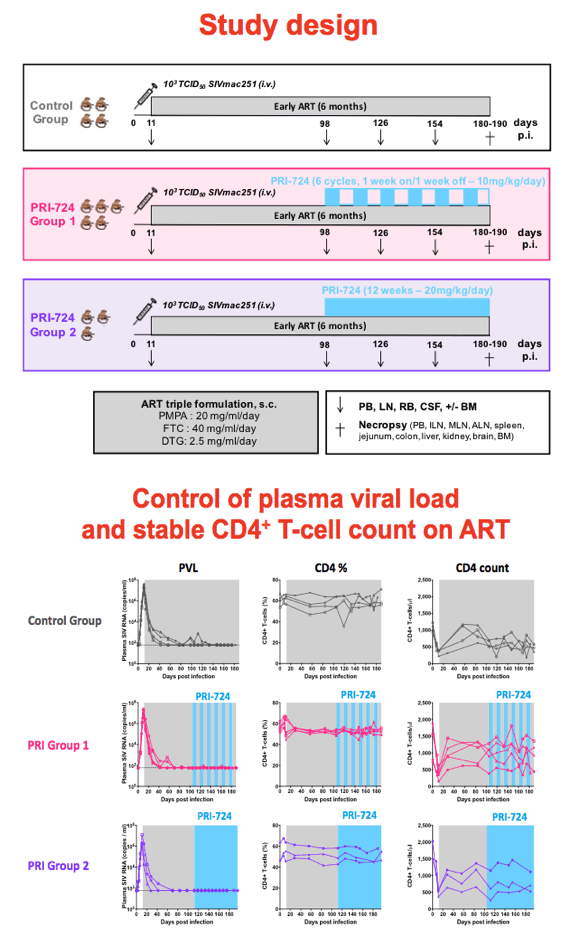
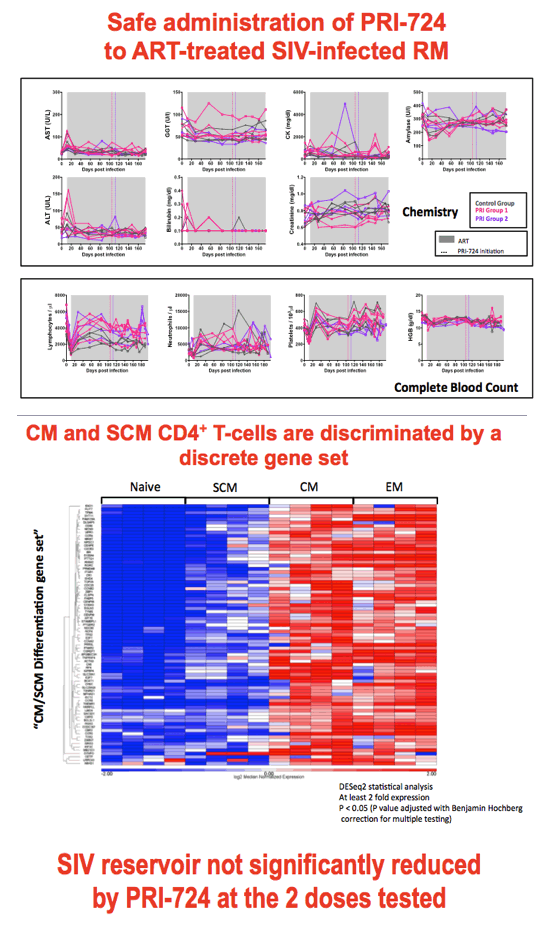
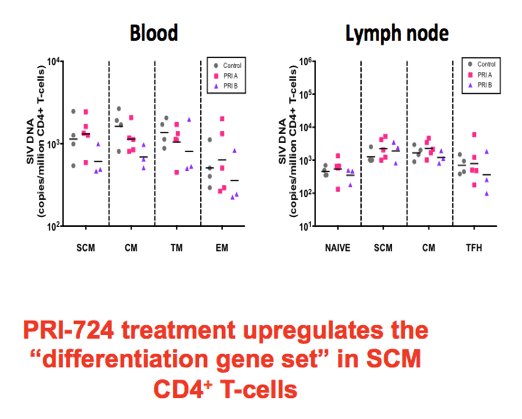
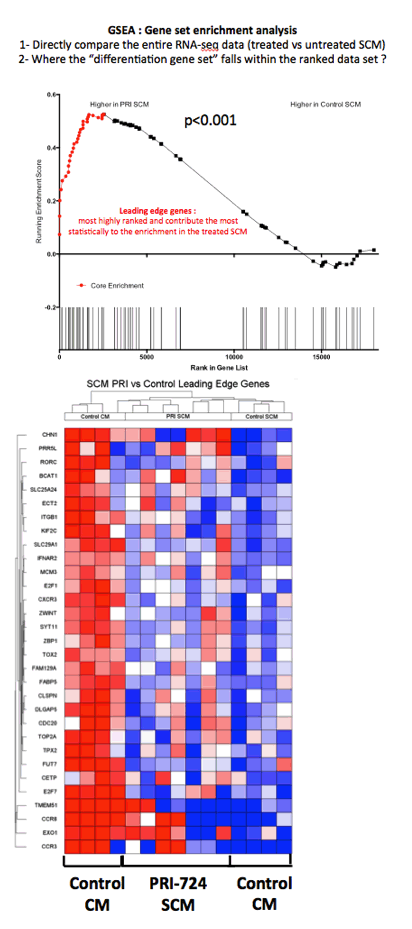
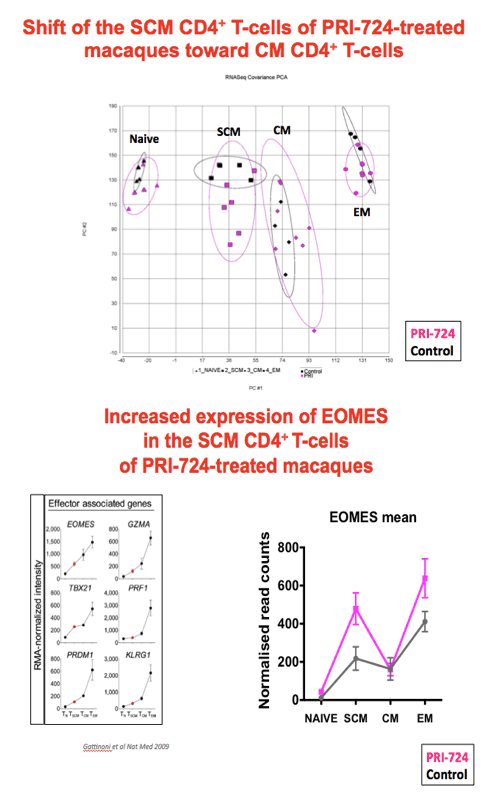
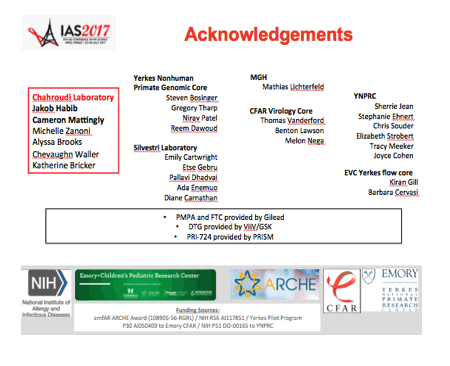
|
| |
|
 |
 |
|
|